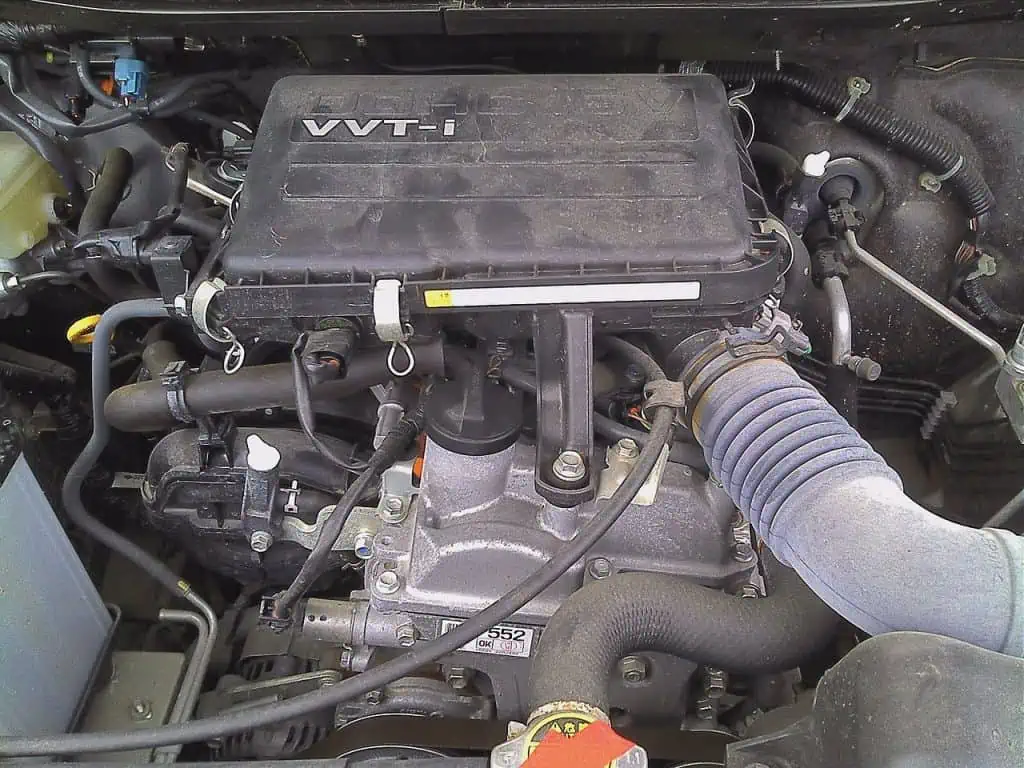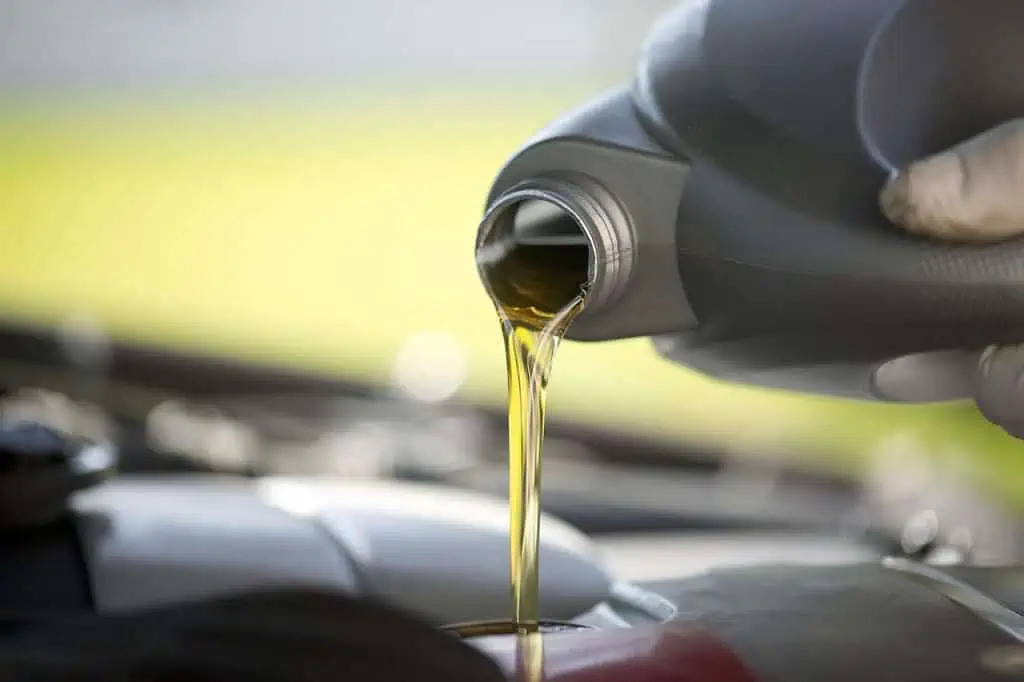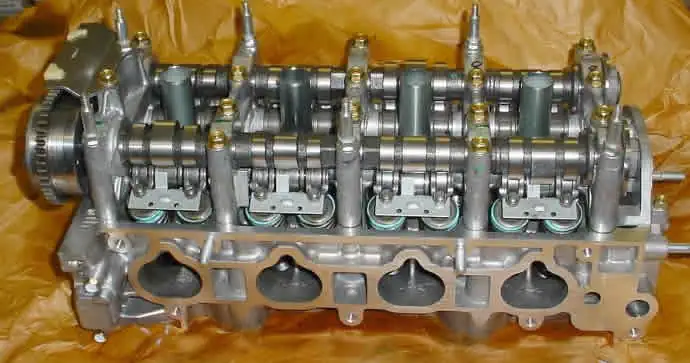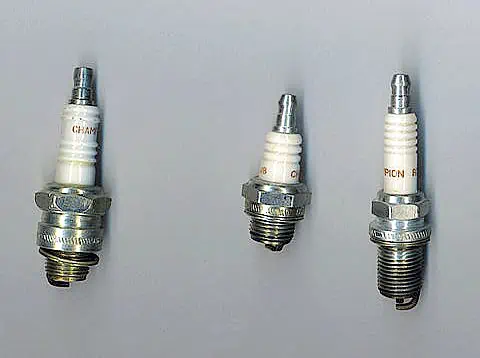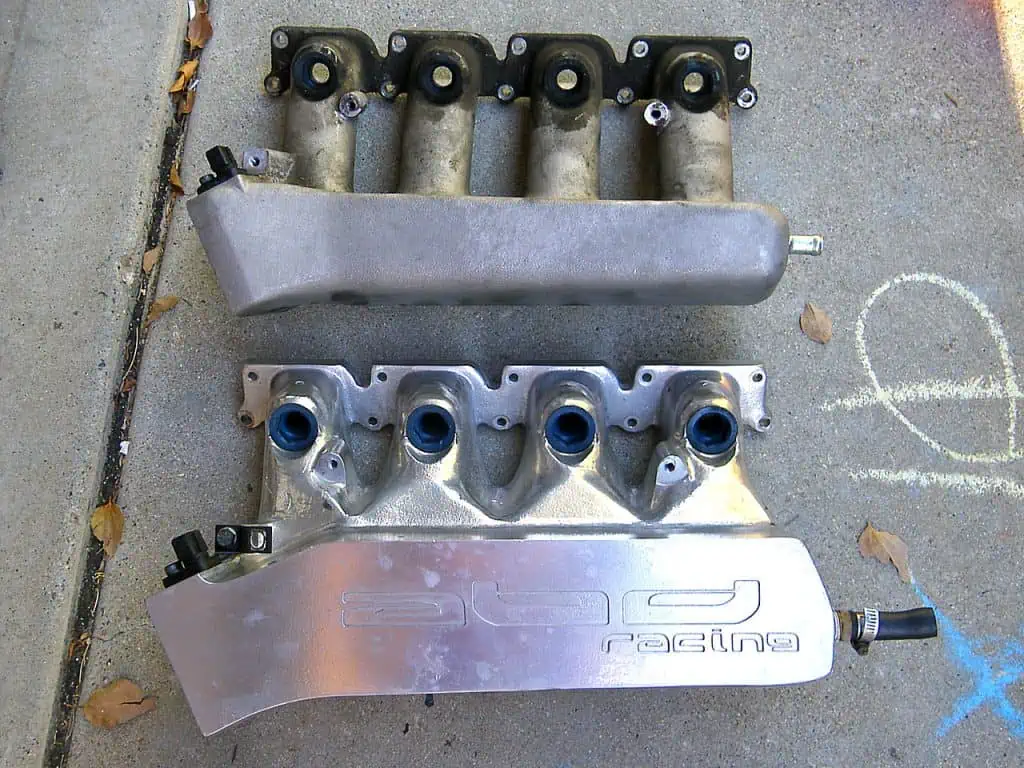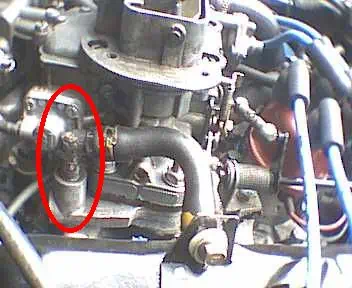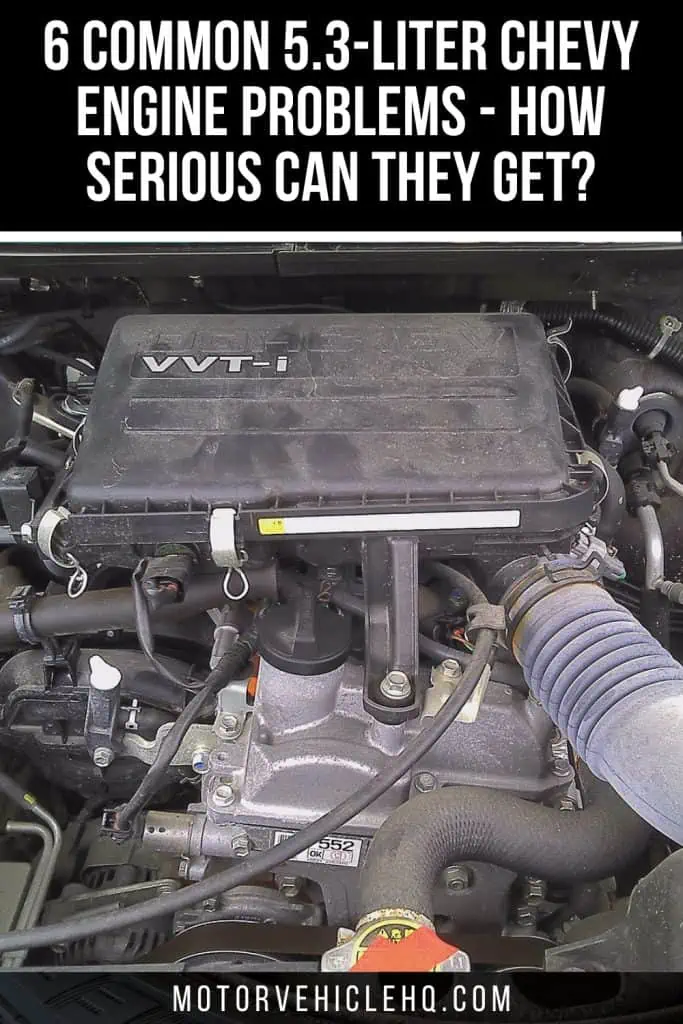The 5.3-liter Chevy V8 is well-known and adored in the industry for its dependability and lengthy lifespan. But each engine has its own unique set of issues, and the 5.3-liter Chevy is no exception. Owners frequently lament about 5.3-liter Chevy engine problems.
V8 engines have won over thousands of customers over the years with their flawless running. They get decent gas mileage while yet having enough power to take you somewhere for an adventure.
The typical 5.3-liter Chevy engine may travel more than 200,000 miles. Given all the incredible features of this engine, the community as a whole found its behavior with this particular model’s engine to be very disappointing.
The 5.3-liter Chevy engine displacement has been constant for more than two decades. In 1999, it was initially released on the market. The 5.3-liter Chevy engine has seen three significant generational alterations since it first debuted as a truck version of the Chevrolet Corvette’s LS engine.
The 5.3-liter Chevy engine and LS engines still share a lot of components, and the original 5.3-liter V8 had a cast-iron engine block as opposed to an aluminum one.
We’ll look at the illustrious, occasionally depressing history of the 5.3-liter Chevy engine problems before delving into the issues.
The Silverado 5.3-Liter Chevy Engine
For the model years 2009 to 2011, many motorists have voiced their complaints about the high oil usage. On average, some of them lost 2 to 4 quarts of oil each time they changed the oil.
These assertions shared the fact that there didn’t appear to be any indications of a leak, and no smoke was found in the exhaust either, as a connecting factor. Most people claimed to have performed routine maintenance, but a minority claimed to have used only the highest-grade full-synthetic oil.
A typical car engine by Yones / CC BY-SA 3.0. The standard Chevy 5.3-liter engine may go over 200,000 miles. The community as a whole considered this engine’s behavior with a particular model’s engine to be rather disappointing, given all the wonderful features it has.
Some drivers who complained to their local dealers received responses stating that a quart of fuel was the typical consumption per 1,000 kilometers. At around 2,000 miles, similar claims were made by other dealers.
Silverados’ owners found it difficult to accept those claims. Another intriguing finding is that some of these drivers began to experience issues at 60,000 miles.
The 5.3-liter Chevy V8 engine’s flaw led to high oil consumption. The active fuel management system, or AFM, was a technology developed by GMC for their automobiles in 2007. According to the company’s plans, the update was supposed to improve the motors’ horsepower, fuel efficiency, and torque.
However, it appeared that the AFM caused the oil to pass the pistons and gradually enter the combustion chambers. Either it would burn, or it would collect in the cylinders. If this wasn’t handled right away, the cylinders or pistons would get destroyed.
5.3-Liter Chevy Engine: What Is It?
The third generation of the small-block V8 engine from the same firm was when the 5.3-liter Chevy V8 first appeared. It was given the name Vortec 5300 for marketing purposes. This engine is used in the Chevrolet Avalanche and Silverado.
Additionally, this engine is used in vehicles including the GMC Yukon, Cadillac Escalade, and the Chevy Tahoe and Suburban. Additionally, it was located inside the hoods of vehicles like the Chevy Express and GMC Savana. It was still in operation in 2007.
In 2005, Chevrolet unveiled the fourth-generation small-block V8. While the nomenclature remained the same, power significantly increased. Additionally, cylinder deactivation technology, also known as Active Fuel Management, was used in this version.
To save gasoline, the engine would cut off 4 cylinders when it encountered terrain that didn’t call for as much power. As a result, the 4th generation trucks with 5.3-liter engines were able to achieve highway fuel economy of more than 20 mpg.
The name of the small-block engines changed with the introduction of the fifth generation. Ecotec3 5.3 is the new name for 5.3. In GM trucks and SUVs starting with the 2013 model year, this engine is available. These engines, which used variable valve timing and cylinder deactivation, were innovative for the franchise.
Additionally, Ecotec3 engines are flex-fuel compatible, so you may use E85 without making any modifications. There is also a hybrid variant of this car, whose city fuel efficiency is around 20 MPG.
The Vortec 5.3-Liter Chevy Generation 3 Engine
There are a few difficulties you should be aware of even though the technology in the third-generation Vortec 5300 isn’t the most complicated. These engines are most likely found in GMC trucks, Chevys, and SUVs made between the years 1999 and 2007.
The simplest way to tell if a Vortec 5300 is a generation three or generation four is to see if Active Fuel Management is installed.
Naturally, everything without Active Fuel Management belongs to the generation three family. The Gen-three Vortec 5300 has its own (many) problems, including the well-known cylinder head crack issue that owners experienced. The gash allowed coolant to leak out.
Pouring fresh motor oil into an engine by Aaberlanga / CC BY-SA 4.0. Due to a fault, the 5.3-liter Chevy V8 engine used a lot of oil. In 2007, GMC created the active fuel management system, or AFM, for use in their vehicles. The company’s plans called for the update to boost the motors’ horsepower, fuel economy, and torque.
Although this issue wasn’t common enough to need a recall, GM still released a technical service bulletin on the subject. The business asserted that the problem stems from a manufacturing error when the cylinder heads were produced by the outsourced company Castech.
Fortunately, not all Vortec 5300 engines had these heads, and not all Castech heads had this issue. If your car experiences any coolant loss over time, this is how you can tell if it has this problem. The motor should be good if not. Remember that Castech-head vehicles could exhibit this issue at any time.
We advise getting a pre-purchase inspection mechanic to remove the valve covers and look for the Castech marking on the cylinder heads before you acquire any vehicle.
Failure of the intake manifold gaskets and intake manifolds would be another issue with the third-generation Vortec 5300 engines. No formal recall was required in this case either. However, gaskets lose quality with use and abuse, which is a concern with many 5.3-liter engines (higher mileage ones). Additionally, the intake manifolds constructed of plastic can be prone to cracking.
Power loss that is obvious or rough idling while driving may be signs of damaged gaskets or defective manifolds. Sometimes the issue is so serious that it causes the check engine light to come on. Again, this might be discovered during a pre-purchase examination.
Drivers also appeared to have a lot of familiarity with fuel pressure regulators. This would make it difficult or impossible for the car to start. Additionally, it may result in poor acceleration, premature spark plug failure, stuttering, and rough idling. But changing the fuel pressure regulator is simple and inexpensive. A skilled mechanic should have no trouble with it.
You might experience some more engine-related problems and malfunctions, as with any vehicle this old. For instance, if the vehicle hasn’t been properly maintained, faulty gaskets, broken spark plugs, or even engine sludge buildup could occur.
Remember that an engine won’t last if the owner is careless and doesn’t service it frequently. Before purchasing, it’s crucial to understand the car’s repair and maintenance history.
The Vortec 5.3-Liter Chevy Generation 4 Engine
The 5.3-liter Chevy engine problems now face additional difficulties as a result of technological improvement. The AFM technology significantly increased the efficiency of the V8 engines, but it also turned out to be one of the drawbacks.
1. Excessive Use of Oil
According to reports, models created between 2010 and 2014 showed excessive oil usage that was much higher than average levels. After some time of investigation, it was determined that the Active Fuel Management system was to blame.
Disabling the AFM system is the simple fix for an issue that seems quite bothersome and complex.
In addition to worries about oil consumption, the 4th generation Vortec 5300 had a problematic oil monitoring system. Drivers are informed by this system when the oil level is low and needs to be topped off.
An automotive engine’s cylinder head by Kauczuk / CC BY-SA 3.0. A broken cylinder head, which will need to be repaired, may very likely be one of the main engine problems. Thankfully, this problem doesn’t happen as often. Given how frequently people in the neighborhood still discuss it, it was worthwhile to bring it up.
Some owners said their monitoring systems were faulty, which caused terrible engine damage. The problem was brought on by the engine running for extended periods without enough oil.
A faulty oil monitoring system makes it difficult to determine if your automobile is using too much oil, and it also necessitates the purchase of an entirely new engine. The problem was so widespread in the early 2010s that GM eventually became the target of a class-action lawsuit. Additionally, the Vortec 5300 versions made after 2013 were discontinued. Then, GM introduced the generation-five Ecotec3 5.3, a new model.
2. Ruptured Cylinder Head
One of the primary engine issues could very well be a shattered cylinder head, which will require an expensive repair. Thankfully, this issue isn’t as prevalent. It was worthwhile to bring up because the neighborhood still talks about it quite a bit.
Castech produced the cylinder heads for many Gen III and Gen IV engines, including the LM7, L33, LH6, L59, and LR4. As previously reported, Castech was discovered to make gasket heads with flaws that caused a head crack.
The coolant would then be released after the crack. Since there were no obvious symptoms of leakage elsewhere, the coolant loss in that circumstance was referred to as a “phantom” loss.
Several of its signs include:
- Castech cylinder head engine
- Gradual coolant loss
- There are no obvious leakage indicators
It’s not a major concern because not all Castech heads have experienced this issue over time. However, GM did publish a bulletin about it. We have bad news if you’re unlucky and end up with an automobile that has a broken cylinder head. Replacement is a pricey task.
Although driving with a cracked head will make the crack worse, you may decide to continue using the vehicle. It will consequently lose more coolant. An engine that is losing too much coolant might overheat and develop bent internals. The complete cylinder head must be changed as a fix.
3. Spark Plug Malfunction
Spark plug failure is a common problem with Vortec 5300s powered by LH6 and LC9 engines because of carbon buildup. The reason why is more complicated to explain. The PCV valve, AFM, and valve cover design work together to cause this.
The AFM pressure relief valve or the PCV system is the most probable one or two systems in affected vehicles to malfunction.
Finally, excessive carbon buildup occurs on the piston’s ring grooves as a result of excessive oil spray being released from either side. As a result, oil consumption dramatically rises and spark plugs #1 and #7 prematurely degrade.
Several of these signs include:
- Engine stuttering, harsh idling, and more
- Misfires in cylinders
- Use of oil in excess
- Defective spark plugs
Different sizes of automotive spark plugs by Gzuckier / CC BY-SA 3.0. Due to carbon buildup, spark plug failure is a typical issue with Vortec 5300s powered by LH6 and LC9 engines. It is more challenging to explain why. This is a combination of the PCV valve, AFM, and valve cover design.
4. Failure of the Intake Manifold and the Gasket
An intake manifold’s responsibility is to transfer air to the engine’s cylinders. The gasket creates an airtight seal, preventing any air from escaping the cylinder.
On the 5.3L Vortec 5300, the intake manifold has a plastic construction. Unfortunately, the gasket was improperly built, much like the rest of the vehicle, leading to yet another of the common 5.3-liter Chevy engine problems.
The manifold’s plastic construction makes it vulnerable to cracking from normal wear and tear or from being over-torqued. As a result, an air leak develops, lowering intake pressure and cutting off the engine’s oxygen supply. The intake manifold also comes with a factory gasket, which is likewise badly made. It degrades too quickly and results in air leaks.
When there is an air leak, whether it comes from the gasket or the manifold, the vehicle won’t have enough oxygen, which could lead to poor performance. Some of the signs are:
- Loss of power
- Stuttering and rough idle
- Engine codes with lean bank designations
5. Failure of the Fuel Pressure Regulator
From 1999 until 2006, the third-generation Vortec 5300 frequently exhibited fuel pressure regulator failure. The vehicle’s control of the fuel sprayed on it by the injectors rests on this component. In the end, it affects the air-to-fuel ratio. Again, this has a significant impact on engine performance.
A truck may receive either too little or too much fuel if its fuel pressure regulator is malfunctioning. In both cases, this leads to poor idling, misfires, shaking of the engine during acceleration, power loss, and other problems.
Some of the signs are:
- Hard starting or not starting at all
- Poor overall performance
- Misfiring engine associated with code P0300
- Harsh idling and stuttering
- Early spark plug fouling
The 5.3-liter Chevy engine troubles most prevalent symptom is hard starting, or simply having trouble starting the automobile in general. If this is the case, the regulator is probably not providing the injectors with enough gasoline to start the engine.
Positive aspect: It’s simple and affordable to fix the regulator. You can also follow this DIY tutorial if you have some basic knowledge of automobiles and engines.
The Ecotec3 5.3-Liter V8 Engine
Aside from the internals, fifth-gen brought about a significant alteration in the Vortec series. After the model year 2014, the name was eventually changed. The 5.3 engines are currently referred to as Ecotec3 5.3-liter V8 engines.
An automotive engine’s intake manifold by Alison Cassidy / CC BY-SA 3.0. The intake manifold is made of plastic on the 5.3L Vortec 5300. Unfortunately, the gasket, like the rest of the car, was manufactured incorrectly, which caused another of the typical 5.3-liter Chevy engine issues.
The fuel injection mechanism is a significant distinction between this new engine and the Vortec 5300 engines. The Ecotec3 5.3 engines are directly injected, while the Vortec 5300 responds on port injection near the intake manifold. This indicates that the cylinder is sprayed directly rather than as a secondary through the intake manifold.
Direct injection is a common characteristic of current vehicles because it is more effective and provides a more precise method of fuel regulation, resulting in higher fuel economy. The direct injection system, including the Ecotec3 5.3 engines, has one fundamental weakness, though.
Typically, the intake manifold interior and the valves of direct-injected engines have carbon accumulation. This happens when high-pressure gasoline isn’t sprayed on them to clean them.
That is something a port injection engine would have. While some cleansers can be sprayed into the intake to prevent further buildup, they cannot completely prevent buildup.
Many direct-injected engines require routine walnut blasting cleaning of the intakes and valves, which involves blasting the components with a mixture of finely powdered walnut shells using a high-pressure air system. Walnuts are not only soft enough to clean the engine parts without damaging them, but they are also biodegradable.
The presence of too much carbon might cause the car to misfire, lose power, stutter, and idle poorly. Due to increasing carbon accumulation reported by higher mileage engines, the symptoms will gradually become more obvious.
Although it’s not the most frequent problem Ecotec3 5.3 owners deal with, failing fuel injectors is nonetheless a problem. The fuel injectors spray directly into the combustion chambers as a result of the direct injection technique.
The technique exposes the injectors to oppressive pressure and heat levels. They may eventually fall short. The car may receive too much or not enough fuel if this occurs.
Further describing, the injectors are unable to open or close. The engine malfunctions in both scenarios, causing the check engine lights to illuminate. Misfires were also observed in certain extreme circumstances. Injector failure, however, is not a pressing problem. When looking for automobiles with Ecotec3 engines and low mileage, keep this in mind.
These are the only issues with the Ecotec3 engine that have been brought up thus far. We are aware that it continues to use the cylinder deactivation technology used by Active Fuel Management, which is the cause of far too many 5.3-liter Chevy engine problems. However, GM has been working on these, and it appears that they have largely resolved the issues with high oil use.
Which are the General 5.3-Liter Chevy Engine Problems?
It is preferable to look for a Gen III Vortec 5300 car that has been well-maintained and has low miles if you intend to purchase an older, used 5.3-liter Chevy engine. The models from before that year should be a safe bet, considering how the majority of the oil consumption-related worries began in 2007.
To prevent the 5.3-liter Chevy engine problems, we advise choosing a model built in 2014 or later if you’re looking for a newer vehicle. Any vehicle with an Ecotec3 engine will do. Since it uses a direct injection system, cleaning the intake will cost you a little, but it’s well worth it.
We strongly advise conducting your research before making the transaction, just like when purchasing used automobiles. This entails looking for the vehicle’s VIN and service record.
Spring-loaded piston rings by Interiot~commonswiki / CC BY-SA 2.0. The system uses an oil pressure relief valve, which benefits it by providing oil to the piston skirts. This oil spray, which also sprays oil past the rings, is supposed to overload and foul the broken piston rings.
Some mechanics offer a pre-purchase inspection. Use that chance to educate yourself on the items you’re purchasing. It may keep you from purchasing a car with glaring problems. In the long term, you’ll save thousands of dollars.
This 5.3-Liter Chevy engine has significant underlying problems despite its dependability.
1. Noise and Misfires
This 5.3-liter Chevy engine seems to be prone to noise and misfires rather frequently. These misfires are brought on by different types of Active Fuel Management Lifters.
A common characteristic of many engines, active fuel management, can cause some major problems. When the AFM liter presents itself extremely early, you must deal with the poor compression factor.
2. Sludge In the Engine
Internal engine sludge is another concern with the 5.3-liter Chevy engine. Sludge increases when oil interacts with carbon dust and air. The engine will start to struggle and malfunction with these sludges.
It is crucial to maintain quality oil management and appropriate oil monitoring to limit this as much as feasible. Putting in place a maintenance schedule will increase the engine’s longevity while preventing engine failure.
3. Faulty Sensors
The 5.3-liter Chevy engine may break down due to malfunctioning sensors in addition to engine sludge. Even though this is a relatively typical issue with this kind of engine, it can still be annoying.
A few high-quality oil sensors will boost the output. However, a defective indicator may result in some excessive oil use and a false alert.
4. High Oil Consumption
The 5.3-liter Chevy engine is also plagued by excessive oil consumption. With the 5.3-Liter Chevy Engine, excessive oil consumption is a regular occurrence that is caused by frictional loss, which raises internal sludge and increases oil consumption.
The majority of drivers are aware that oil use affects fuel efficiency. You may have a small amount of difficulty as a business owner who depends on deliveries or transportation with your 5.3-liter Chevy engine with this problem.
The cost may be directly related to increased driving, which will ultimately influence transportation costs and total operations.
Environmental contamination is a factor as well, and it is connected to the overuse of oil. When excessive oil use is taken into account, greenhouse gas emissions quickly rise and cause pollution.
Unfortunately, fixing this issue would be too expensive in terms of time and components for many owners of 5.3-Liter Chevy Engines. The engine owner runs the danger of an improperly rebuilt engine and even allocating piston rings and gaskets once they consider the engine rebuilding process.
5. Spark Plug Failure Caused By Carbon Buildup
The LC9 and LH6 engine variants of the Vortec 5300, which were produced between 2007 and 2011, are prone to defective spark plugs. The PCV valve, AFM, and valve cover design together have all the makings of a catastrophe.
Positive crankcase ventilation (PCV) systems by Sonett72 / CC BY-SA 3.0. The PCV system or the AFM pressure relief valve in the crankcase is most likely to blame in vehicles with this problem. Either an excessive amount of oil spray eventually spills from the PCV valve. The piston ring grooves on the engine owner’s engine contain a lot of carbon buildup as a result.
The AFM pressure relief valve in the crankcase or the PCV system is the likely culprit in automobiles with this issue. Either the PCV valve ultimately leaks an excessive amount of oil spray. As a result, the piston ring grooves on the engine owner’s engine have an excessive amount of carbon accumulation.
6. Failure of the Gasket and the Intake Manifold
The intake manifold on the 5.3L Vortec is composed of plastic since the gasket is what creates an airtight seal and works to stop any air from escaping as it enters the cylinders. Its design is also subpar.
It is prone to cracking, breaking, or splitting because it is made of plastic. As the engine functions in various high-heat settings, this might result from being over-torqued or just general wear and tear.
This ultimately results in an air leak, which lowers intake pressures and may rob the engine of vital oxygen. There is also the issue of the intake manifold’s stock gasket, which was similarly poorly constructed.
Air leaks are also brought on by this degradation. Additional manifold and intake problems might potentially result in power loss, rough idling and stuttering, sounds, and the appearance of engine codes.
The Class Action Lawsuit and the 5.3-Liter Chevy Engine Problems
The 5.3-liter Chevy engine experienced so many problems back in December 2019 that a class-action lawsuit was started. The lawsuit “…alleges the Generation IV Vortec 5.3-liter Chevy engine burns too much oil in these vehicles,” according to CarComplaints.com.
According to the lawsuit, the Vortec engines burn abnormally large volumes of oil that are much over industry guidelines, which leads to low oil levels and engine damage, CarComplaints.com continues.
The complaint asserts that excessive oil consumption and engines that fail to sustain tension to keep oil in the crankcases are caused by piston rings in the 5.3-liter Chevy engine. The complaint further asserts that the active fuel management system is ineffective.
An oil pressure relief valve is used in the system, which helps it by spraying oil over the piston skirts. The damaged piston rings are said to be overloaded and fouled by this oil spray, which also sprays oil past the rings.
Depending on how it moves, the oil either burns or builds up as carbon on the surface of the combustion chambers. A defective PCV system, according to the class action lawsuit, is accused of sucking oil from the valvetrain into the intake system, where it burns in the combustion chambers.
The Conclusion
The automobiles are nonetheless popular despite the 5.3-liter Chevy engine problems, which are somewhat concerning. They are capable of handling any task, whether taking you to work each day or going with you on a weeklong road vacation.
Knowing what you want in a car before you go shopping will help you win (or avoid) half the battle. Your dream car is just a little bit of study and the odd nitpicking away.
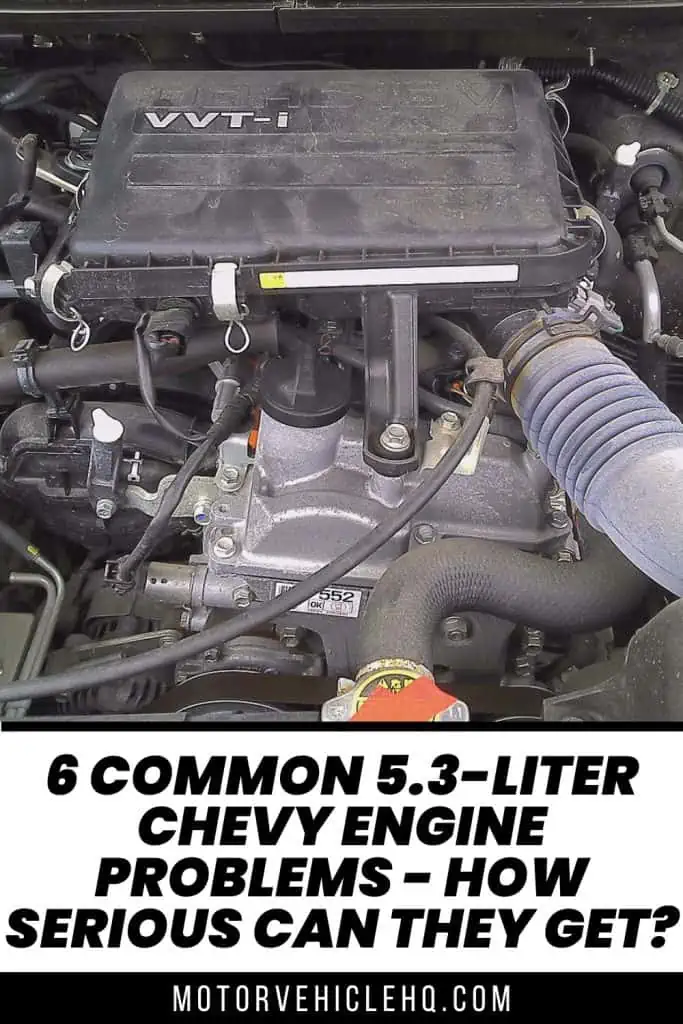
A typical car engine by Yones / CC BY-SA 3.0

Jim Wicks is the founder of MotorVehicleHQ. With over two decades of experience in the automotive industry and a degree in Automotive Technology, Jim is a certified car expert who has worked in various roles ranging from a mechanic, car dealership manager, to a racing car driver. He has owned more than 20 cars over the past 15 years. Ask him about any vehicle you see on the road and he can tell you the make, model and year. He loves the aesthetics of all things cars, and keeps his vehicles in pristine condition.
In his free time, Jim enjoys getting his hands dirty under the hood of a classic car or taking long drives along the country roads. His favorite car? A 1967 Shelby GT500, a true classic that, according to Jim, “represents the pure essence of American muscle.”
